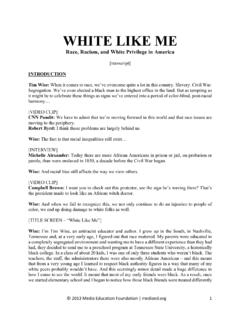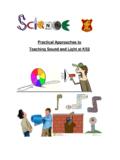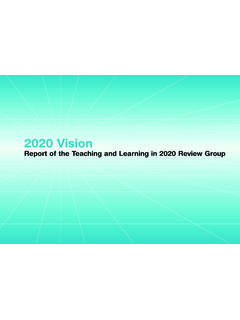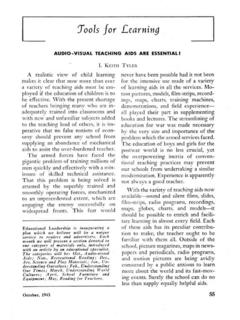Transcription of MEDIA EDUCATION FOUNDATION
1 MEDIA EDUCATION FOUNDATION STUDY GUIDE TOUGH GUISE 2 Violence, Manhood & American Culture Based on the work of Jackson Katz Study Guide by Jeremy Earp 2 CONTENTS Note to Educators 3 Program Overview 4 Pre-viewing Discussion & Writing Questions 5 Introduction 6 Hiding in Plain Sight 7 A Taught Behavior 9 An American Ideal 11 The Cool Pose 12 Upping the Ante 13 A Culture in Retreat 14 All the Wrong Lessons 15 Beyond the Tough Guise 16 Post-viewing Assignments 17 3 A NOTE TO EDUCATORS This study guide is designed to help you and your students engage and manage the information presented in this video. Given that it can be difficult to teach visual content and difficult for students to recall detailed information from videos after viewing them the intention here is to give you a tool to help your students slow down and deepen their thinking about the specific issues this video addresses.
2 With this in mind, we ve structured the guide to give you the option of focusing in depth on one section of the video at a time. We ve also set it up to help you stay close to the video s main line of argument as it unfolds. The structure of the guide therefore mirrors the structure of the video, moving through each of the video s sections with a series of key summary points and questions specific to that section, followed at the very end by a number of assignments. Pre-Viewing Exercises enable students to reflect on some of their basic assumptions about masculinity and cultural ideals of manhood before watching this video. Key Points provide a concise and comprehensive summary of each section of the video. They are designed to make it easier for you and your students to recall the details of the video during class discussions, and as a reference point for students as they work on assignments. Questions for Discussion & Writing provide a series of questions designed to help you review and clarify material for your students; to encourage students to reflect critically on this material during class discussions; and to prompt and guide their written reactions to the video before and after these discussions.
3 These questions can therefore be used in different ways: as guideposts for class discussion, as a framework for smaller group discussion and presentations, or as self-standing, in-class writing assignments ( as prompts for freewriting or in-class reaction papers in which students are asked to write spontaneously and informally while the video is fresh in their mind). Post-Viewing Assignments encourage students to engage the video in more depth by conducting research, working on individual and group projects, putting together presentations, and composing formal essays. These assignments are designed to challenge students to show command of the material presented in the video, to think critically and independently about this material from a number of different perspectives, and to develop and defend their own point of view on the issues at stake. 4 PROGRAM OVERVIEW In Tough Guise 2, pioneering anti-violence educator and cultural theorist Jackson Katz argues that the ongoing epidemic of men's violence in America is rooted in our inability as a society to move beyond outmoded ideals of manhood.
4 Cutting across racial, ethnic, and class lines, Katz examines mass shootings, day-to-day gun violence, violence against women, bullying, gay-bashing, and American militarism against the backdrop of a culture that has normalized violent masculinity especially in the face of challenges to traditional male power and authority. Along the way, the film looks at the violent, sexist, and homophobic messages boys and young men receive from virtually every corner of the culture from television, movies, video games, and advertising, to pornography, the sports culture, and political culture. At its core, Tough Guise 2 argues that men s violence is overwhelmingly a gendered phenomenon. And it suggests that any attempt to understand violence therefore requires critically examining our cultural codes and ideals of manhood. The following points are central to the film s main line of argument: Masculinity is made, not a given; MEDIA are the primary narrative and pedagogical forces of our time; MEDIA images of manhood therefore play a pivotal role in making, shaping and privileging certain cultural and personal attitudes about manhood; A critical examination of privileged MEDIA images of manhood reveals a widespread and disturbing equation of masculinity with pathological control and violence; Looking critically at constructed ideals of manhood at how, why and in whose interests these ideals are constructed in different historical, social, and cultural contexts denaturalizes and diminishes the potential of these imagined ideals to shape perceptions of ourselves, our world, and each other.
5 5 PRE-VIEWING DISCUSSION & WRITING QUESTIONS 1. Ask students to reflect on why it is that men and boys commit the overwhelming majority of violence in America. 2. Draw a large box on the board. Then ask students to name characteristics of what the dominant culture defines as a real man. Write these characteristics inside the box. When the box is full, ask students to name characteristics of young men and boys who don t measure up to this ideal of the real man, and write these terms outside the box. Then, using this as a visual backdrop, ask students to reflect on where these pressures to remain inside the box come from. 3. Ask students to look up the terms masculine and feminine, and to reflect on a) the relationship of these terms to one s biological sex, and b) how boys and girls are forced to navigate the cultural meanings of these terms. 4. Ask students to reflect on the difference between sex and gender.
6 Are the two terms synonymous? Is it more or less okay to use them interchangeably? Or is there a difference in meaning here that matters? 6 INTRODUCTION Key Points When we talk about violence in America, whether it s mass shootings in the real world or sensationalized violence in our movies and video games, we re almost always talking about violent masculinity. The statistics tell the story: the overwhelming majority of violence sexual assault, mass shootings, murder, and domestic violence resulting in physical injury is committed by men and boys. But even though men and boys commit the vast majority of violence in America, gender is rarely a part of mainstream discussions about violence. Questions for Discussion & Writing 1. Why do you think it is that men and boys commit such an overwhelming percentage of violence in America? 2. Does Katz s observation that men and boys are responsible for the vast majority of violence in America imply that most men and boys are violent?
7 Why or why not? Explain. 3. What s the difference between Katz saying that violence is about violent masculinity rather than about violent males? Explain. 7 HIDING IN PLAIN SIGHT Key Points In mainstream MEDIA coverage of mass shootings, commentators seem to go out of their way to find gender-neutral ways to talk about these acts of violence. The male perpetrators of violence are repeatedly called shooters, murderers, assailants, killers, suspects, psychopaths, and a host of other gender-neutral terms. Mainstream MEDIA coverage also defects attention away from the gender of perpetrators by routinely describing violence committed by boys as kids killing kids and youth violence. While mainstream analysis of the causes of violence regularly focuses on myriad variables from guns and drugs to video games and dysfunctional families there s often little to no analysis of why it is that girls and women are also affected by such variables yet commit nowhere near the level of violence men and boys do.
8 One particularly glaring example of how the gender of perpetrators disappears is in the MEDIA s use of the passive voice: men s violence against women becomes simply violence against women, and news reports repeatedly talk about women being harassed, abused, assaulted, or raped with virtually no reference to the perpetrators. All of this is partly a function of how dominant ideologies work at the level of language to conceal the power of dominant groups and shield them from scrutiny and critical reflection. And when the gender of perpetrators does come under scrutiny in mainstream discussions about men s violence, the focus usually turns to biological rather than social and cultural explanations, reinforcing the idea that boys will be boys and are therefore somehow naturally prone to murder and rape and commit other forms of violence. This kind of reductionist biological determinism renders men s violence inevitable and blinds us to the fundamental role that changeable cultural systems play in all of this.
9 Questions for Discussion & Writing 1. What are some of the most common gender-neutral pronouns that get used to describe perpetrators of violence? 2. Why do you think people in news MEDIA so often use gender-neutral terms to talk about perpetrators? Do you think this is conscious? Do you think it s simply too obvious to point out that men and boys are responsible for violent acts? If that s the case, then why 8 does MEDIA coverage of violence go on at such length about other variables that might matter, like whether perpetrators play video games or have access to guns? 3. When women or girls commit acts of violence, why does their gender usually become a prominent and explicit part of the story? 4. What does Katz mean when he says that one of the ways dominant groups shield themselves from scrutiny is by remaining invisible? Can you think about how that might work on a practical level? 5. Katz talks about journalists using the passive voice to describe men s violence against women.
10 What, exactly does he mean by passive voice ? And why does this matter? 6. What is Katz s concern about the common phrase boys will be boys ? 7. Does Katz argue that biology plays no role in men s violence? What, exactly, is his critique of those who reduce discussions about male violence to biology? 9 A TAUGHT BEHAVIOR Key Points For decades, experts and government officials have been arguing that we need to take a closer look at the relationship between violence in the culture and violence in the real world. This focus on the culture of violence in America took on new, and bipartisan, urgency in the wake of Adam Lanza s murder of 20 children and six adults at Sandy Hook Elementary School in Newtown, Connecticut, in 2012. But unfortunately the debate quickly descended into a superficial debate between defenders of the gun industry and defenders of the entertainment industry with both blaming each other for America s violence problem.
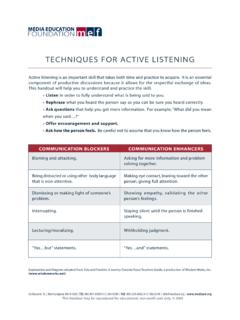
![Tough Guise 2 [Official Transcript] - Media Ed](/cache/preview/c/3/b/5/2/d/3/e/thumb-c3b52d3e6a3437c17d6d8ad6485bd936.jpg)
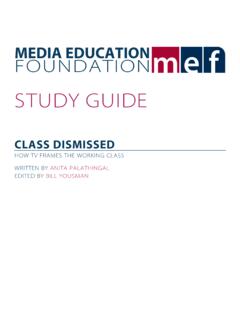

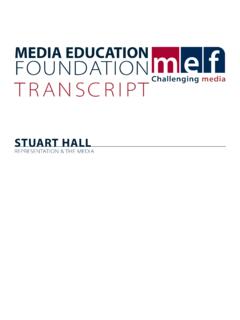
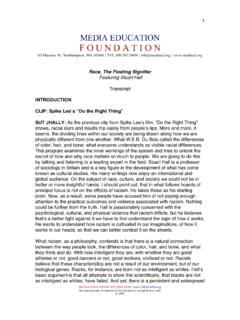
![Requiem For The American Dream [Transcript]](/cache/preview/a/b/8/4/f/8/1/2/thumb-ab84f812664524b6923d6df2929c06cf.jpg)
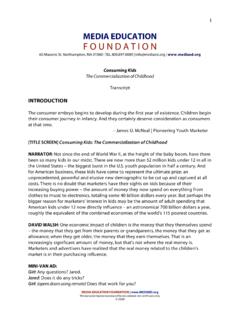
![Advertising at the Edge of the Apocalypse [Transcript]](/cache/preview/d/e/7/c/d/b/4/6/thumb-de7cdb46ab24a926068f936b79251872.jpg)
